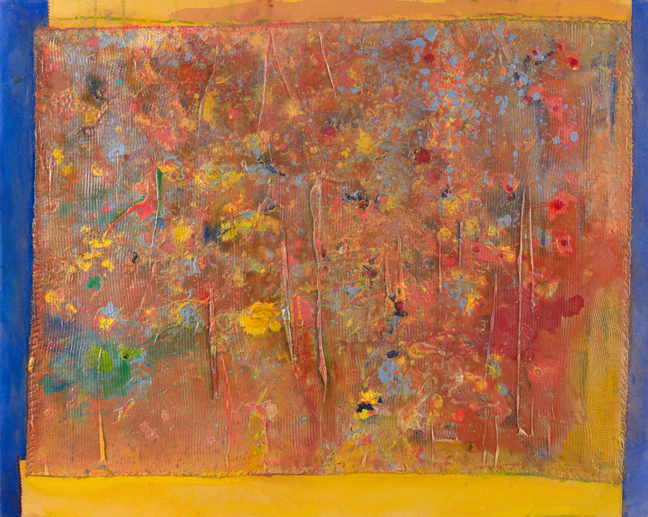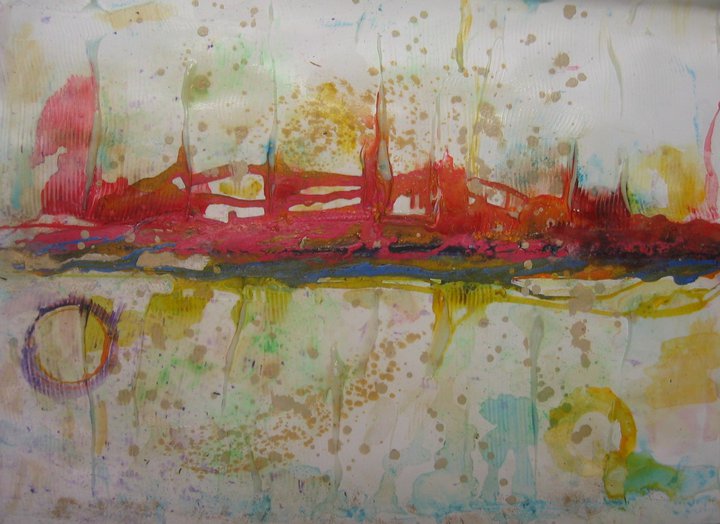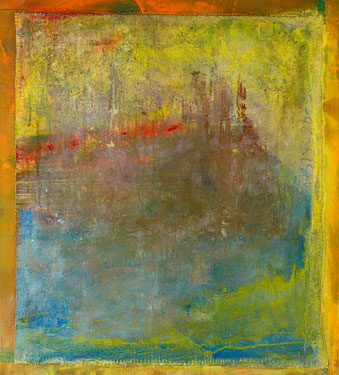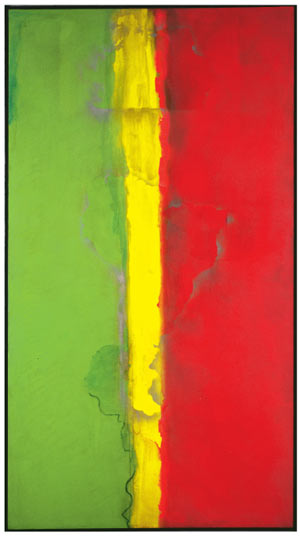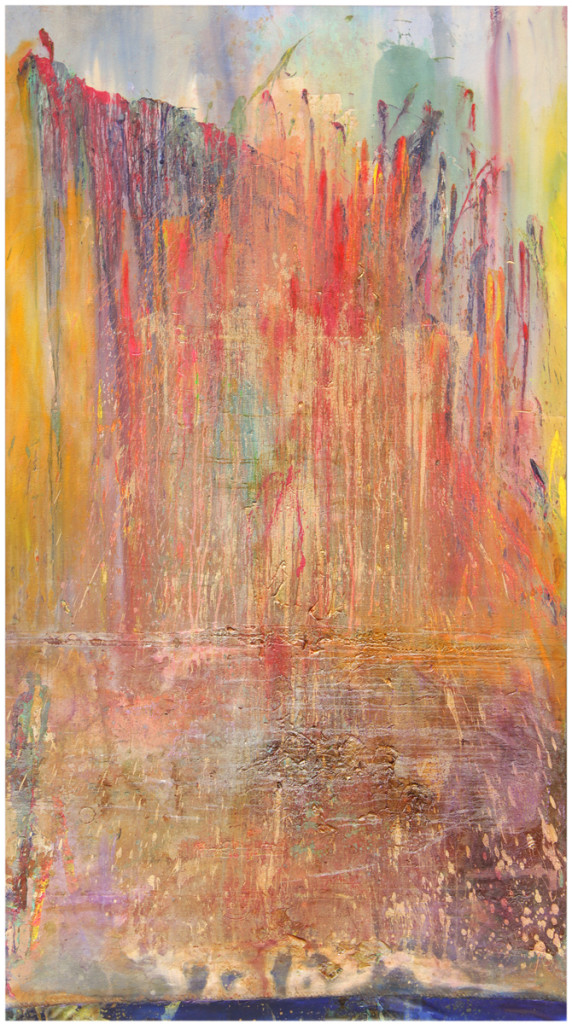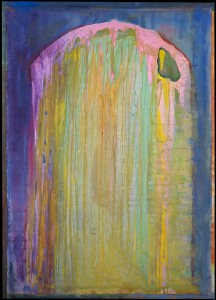
Frank Bowling began his career as a painter of expressionist figural works that accessed trans-cultural traditions and social and political narratives.
Upright, 2012.
About:
Born in British Guyana, painter Frank Bowling belongs to the generation of British artists that came of age in the sixties. After graduating from the Royal College of Art in 1962, along with David Hockney and R. B. Kitaj, he, like Hockney, found his artistic identity in America. Unlike Hockney’s, however, Bowling’s art is rooted in abstraction owing to the abstract expressionist tradition of Mark Rothko. Vigorously dripping and pouring paint in lustrous accretions, he creates texturally complex paintings in which he plays with structure through collaged and brightly painted shapes. He was elected in 2005 as the first black member of England’s Royal Academy.
Bumble, 2010.
Frank Bowling moved in 1950 to England, where he fulfilled his National Service obligation by serving in the Royal Air Force. Turning at first to poetry and art, he then attended a number of English art schools, including the Royal College of Art, to which he won a scholarship. He wrote a thesis on Piet Mondrian at the college, which later led to his improvisations on Fibonacci postulations in his work. On his graduation in 1962 he was awarded the Silver Medal in Painting and a traveling scholarship to South America and the Caribbean.
Passing, 2011.
Although he occasionally created sculpture, Frank Bowling began his career as a painter of expressionist figural works that accessed trans-cultural traditions and social and political narratives. He developed a more geometric conception of space in the mid-1960s, encompassing traditions of Western painting, such as the axioms of Mondrian and J. Hambidge’s Elements of Dynamic Symmetry. His Big Bird (1965) won the Grand Prize for Contemporary Arts at the First World Festival of Negro Arts, held at Dakar, Senegal, in 1965.
37528, 2008.
Frank Bowling, who had first visited New York City in 1961, established residence in the city in 1966. It was at that time that he turned to abstraction as a way of liberating his paintings from overt messages and to explore pure pictorial concerns within the framework of Color Field painting. Increasing the size of his canvases, he began to paint works pinned to the wall or set on the floor of his studio. Bowling also turned to oil for its subtlety, rather than relying on the water-based acrylics he had used earlier. By the 1970s color became his main concern, and he replaced the earthy tones of his earlier works with high-key hues set within animated, fluid surfaces. In 1971 the Whitney Museum of American Art, New York, held a one-person exhibition of Bowling’s work, featuring six of his large canvases measuring nine by twenty-two feet. Critic Robert Doty called these works “a culmination of his search with ‘maps.’” Bowling met the noted critic Clement Greenberg in the same year, and Greenberg gave Bowling advice over many years, encouraging his commitment to modernism.
Who is afraid of Barney Newman.
In the mid-1970s Frank Bowling began to create smaller , which had a more spontaneous effulgence. In works of the 1980s he created surfaces that were harder worked and in which he attached chunks of Styrofoam with serrated edges infused with paint in geometric formations. This work was observed by the New York Times critic Vivien Raynor to be a cross between African fetish and the dribbled images of Jackson Pollock. Bowling has continued to push his exploration of collaged and painted shapes, thickly globbed pigments and lyrically moving passages of color, at times evincing a geometric underpinning and at others breaking free from a structural framework. In 1987 the Tate Gallery in London purchased Bowling’s Spread Out Ron Kitaj, which was the first work by a living black British artist ever to be acquired by the museum.
Ashton Plunge, 2011.
In addition to painting, Frank Bowling has been active as a writer on art. From 1969 to 1972 Bowling worked as a contributing editor to Arts magazine, in which he wrote reviews of exhibitions in New York and London. He also wrote a series of essays on modernism and the contributions of black artists.
Bowling has played a role in many institutions in America and abroad, including the University of Reading; Camberwell School of Arts and Crafts, London; Maidstone College of Art, Kent; Kingston School of Art, Surrey; The Byam Shaw, London; the Cooper Union School of Art and Architecture, New York; Columbia University, New York; Rutgers University, New Jersey; the School of Visual Arts, New York; and Mass Art, Boston. The artist has received numerous awards and fellowships including two Guggenheim fellowships, in 1967 and 1973. Bowling has had numerous solo exhibitions at galleries, museums, and art centers in London and New York, as well as in other cities in Europe.
Frank Bowling currently splits his time between London and New York.(Spanierman Modern, New York)

